Current Research Projects
- Mechanistic Quantification of Bearing Material Degradation due to Rolling Contact Fatigue
- Monotonic and Cyclic Response of Plastically Graded Surfaces subject to Rolling Contact Fatigue
- Surface Crack Growth And Critical Flaw Size In Silicon Nitride Ball Bearings
- Spall Propagation in Hybrid Ball Bearings
- Fatigue Life Estimation in Single Crystal Turbine Blade Superalloys
- An Ultra Highspeed Spindle for Micro Milling
- Ductile Fracture of Surface-Cracked Metallic Liners Bonded to a Structural Composite
- Determination of Static and Dynamic Hardness and Fracture Toughness of Through and Case Hardened Bearing Steels
- Elastic and Fracture Properties Of Bx-265 Foam Material
- An Experimental and Numerical Investigation of Heterogeneous Stress-Induced Phase Transformation in Niti Shape Memory Alloy
Mechanistic Quantification of Bearing Material Degradation due to Rolling Contact Fatigue
(Sponsors: Pratt & Whitney
PI: Nagaraj Arakere, co-PI: G. Subhash, PhD Student: Bryan Allison
Research objective is determination of subsurface material property changes by measuring subsurface cyclic hardening properties via micro-indentation mapping.
Monotonic and Cyclic Response of Plastically Graded Surfaces Subject to Rolling Contact Fatigue (#0927849)
(Sponsor: National Science Foundation, CMMI: Materials & Surface Engineering, Program monitor: Dr. Clark Cooper)
PI: Nagaraj Arakere, Co-PI: Ghatu Subhash
The research objective is to determine the monotonic and cyclic stress-strain properties of plastically graded surfaces (PGSs) relevant to rolling contact fatigue (RCF) in high-performance ball bearings. During RCF, the surface layer experiences cyclic micro plasticity, buildup of residual stress, and contact fatigue damage, eventually leading to fatigue spallation. We propose a coordinated experimental and modeling approach that judiciously combines micro- and macro-indentation investigations with 3D elastic-plastic finite element analysis to determine the constitutive response of PGSs. By performing controlled RCF testing under realistic conditions and probing the localized plastic zones, we extract the cyclic constitutive response as a function of RCF cycles, thereby providing a means for quantitative evaluation of localized material damage evolution. The above approach is applicable to any engineering material irrespective of the nature of gradients in the plastic properties.
The challenging requirements of advanced military and space propulsion systems have led to the development of hybrid bearings with plastically graded case carburized surfaces. However, reliability of bearing systems continues to be a major concern because the current methods used in bearing fatigue life estimation are largely based on probabilistic approaches that are empirical in nature, and do not directly consider the constitutive behavior of materials under RCF loading. The proposed approach allows for development of robust life-estimation methodology by bringing together many cross-disciplinary ideas from manufacturing, materials science, tribology, fatigue, solid mechanics, and experimental mechanics. This approach will facilitate surface engineering of graded layers as well as development of a quantitative description of RCF life in rolling element bearings leading to improved performance, durability and reliability. The project will also contribute to the education and training of the manufacturing research workforce in the US and lead to increased participation by under-represented groups.
Sadeghi, F., Jalalahmadi, B., Slack, T. S., Raje, N., Arakere, N. K., 2009, A Review of Rolling Contact Fatigue," ASME Journal of Tribology, Vol. 131, pp. 1-15. (PDF)
Branch, N., Arakere, N. K., Subhash, G., Klecka, M., 2010, "Determination of Constitutive Response of Plastically Graded Materials," Accepted for publication in The International Journal of Plasticity.
Branch, N., Subhash, G., Arakere, N. K., Klecka, M., 2010, "A material-dependent representative plastic strain for the prediction of indentation hardness," Accepted for publication in Acta Materialia. (PDF)
Surface Crack Growth And Critical Flaw Size In Silicon Nitride Ball Bearings
(Sponsors: Timken Company, Air Force Research Laboratory, Pratt & Whitney Consultants)
PI: Nagaraj Arakere, PhD Student: George Levesque
Hybrid silicon nitride ball/steel raceway bearings are used in advanced aircraft engines and space propulsion systems. Silicon nitride is a brittle material and partial cone cracks, or c-cracks, originate from contact interactions during manufacturing. These ball bearings are susceptible to failure from fatigue spalls emanating from pre-existing partial cone surface cracks that can grow under the action of rolling contact fatigue (RCF). C-cracks not only have non-planar crack faces but also possess non-planar crack tips. This makes their shape more difficult to describe and, therefore, more difficult to analyze in any linear elastic fracture mechanics (LEFM) based analysis. The qualitative and quantitative description of the range of possible partial cone crack shapes in three dimensions (3D) is determined depending on initial conditions of the interaction (coefficient of friction and contact patch size) during oblique spherical contact. This is followed by simulating the range of 3D nonplanar surface flaw geometries subject to RCF to calculate mixed mode stress intensity factors to determine the critical flaw size (CFS), or the smallest allowable flaw that does not grow under service conditions. The evaluation of CFS is of immediate engineering relevance to the hybrid ball bearing industry towards defining refinement necessary for nondestructive evaluation methods for silicon nitride ball quality control and for developing a fracture mechanics based life prediction methodology for hybrid bearings. The cost of non-destructive evaluation (NDE) methods for silicon nitride balls scales exponentially with decreasing CFS and increasing ball diameter and hence the cost associated with NDE can become a significant fraction of the overall manufacturing cost of the silicon nitride ball. Stress intensity factor variability are analyzed for variations of the location and orientation of the load relative to the crack, the geometry of load, full-slip traction and their respective effects on crack tip displacement. CFS is computed as a function of ball diameter, maximum Hertzian stress, raceway curvature, and material mixed-mode fracture properties.
Pattabiraman, S., Levesque, G., Kim, N. H., Arakere, N. K., 2010, Uncertainty Analysis for Rolling Contact Fatigue Failure Probability of Silicon Nitride Ball Bearings," International Journal of Solids and Structures, 47, pp. 2543-2553. (PDF)
Levesque, G., Arakere, N. K., Mecholsky, J., Gopalakrishnan, K., Mecholsky., 2010, "Numerical and Experimental Investigation of Mixed-Mode Fracture Parameter on Silicon Nitride Using the Brazilian Disc Test," Fatigue and Fracture of Engineering Materials and Structures, Vol. 33, Issue 8, pp. 490-503. (PDF)
Levesque, G., Arakere, N. K., 2010, "Critical flaw size in silicon nitride ball bearings," Tribology Transactions, Vol. 53, pp. 511-519. (PDF)
Levesque, G., Arakere, N. K., 2010, "Empirical curve fits for surface flaws subject to rolling contact fatigue," Tribology Transactions, Vol. 53, pp. 621-629. (PDF)
Levesque, G., and Arakere, N. K., 2008, "On Hertzian Brittle Fracture of Oblique Contacting Spheres: A Stress-State Investigation on Silicon Nitride," International Journal for Solids and Structures, V 45, pp. 6301- 6315. (PDF)
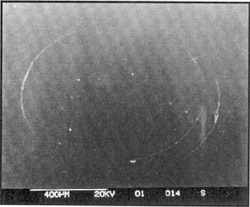
Surface cracks on Si3N4 balls
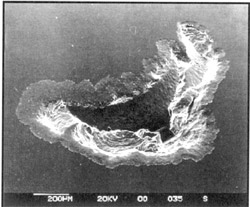
Spalled surface C-cracks due to RCF
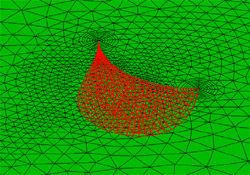
FE model of C-crack
Spall Propagation in Hybrid Ball Bearings
(Sponsors: Timken Company, Air Force Research Laboratory)
PI: Nagaraj Arakere, PhD Student: Nathan Branch
The ever increasing demand for safer and more efficient military and commercial jet aircraft engines has encouraged the design of high performance bearings that have better corrosion resistance, longer rolling contact fatigue (RCF) life, and higher thrust load capacity. Hybrid bearings that use silicon nitride balls and case hardened metal raceways can meet these demands and substantially out-perform conventional through-hardened steel bearings. Past research in bearing fatigue typically used life as the primary measure of performance i.e., the time until initiation of the failure. However, there is also a desire to understand what happens after initiation, i.e., the period of time where the bearing is liberating small pieces of material known as spalls. It is this window where bearing issues in the field are detected, usually from the spalled material collected on the magnetic chip detector. The objective of this research is to model the elastic-plastic stress field associated with loaded region undergoing spall propagation, to understand why certain materials such as M50 and case hardened M50-NiL steels exhibit not only have longer life than 52100 but also have slower propagation rate, under the same loadingmconditions. We also examine the microstructure of the steel to gain insight into the effects of alloy content, heat treatment, and applied stress field affect the microstructure evolution and ultimately the life and spall propagation rate. Modeling includes plasticity and the dynamics of impact. Results to date indicate that significant plastic deformation occurs from impact of the ball with spall edge which induces localized residual stresses. The computed residual compressive hoop stresses and hydrostatic tensile stresses below the spall trailing edge localizes crack growth and subsequent material liberation. The spall edge is observed to maintain a consistent shape throughout propagation and the edge profile closely matches the distribution of maximum principal plastic strain contour. The analytical results are supported by x-ray diffraction measurements and the locations of cracks observed around the trailing edge of a spall. This project is the first systematic investigation toward understanding the governing mechanisms of spall propagation in rolling element bearings.
Branch, N., Arakere, N. K., Svendsen, V., Forster, N., 2010, "Stress field evolution in a ball bearing raceway fatigue spall," ASTM International (American Institute of Physics), Vol. 7, No. 2, JAI102529 (18 pages). (PDF)
Arakere, N. K., Branch, N., Levesque, G., Forster, N., Svendsen, V., 2010, "On the Rolling Contact Fatigue Life and Spall Propagation Characteristics of M50, M50 NiL and 52100 Bearing Materials, Part II - Stress Modeling," Tribology Transactions, Vol. 53, pp. 42-51. (PDF)
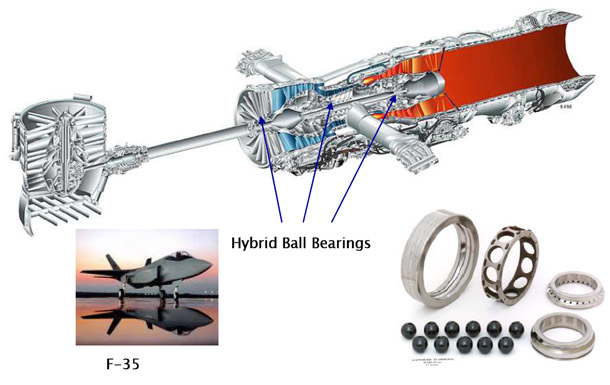

Figure 10.a. Residual stress profile in Hoop direction after 3 impacts

Figure 1.c. Locations of residual stress profiles shown in Figure 11

Figure 1.a. Virgin Raceway

Figure 1.b. Small Spall
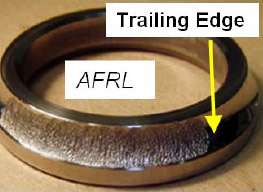
Figure 1.c. Progressed Spall

Figure 7.a. FE Model of ball impacting spall edge

Figure 7.b. Finite Element mesh of raceway segment
Fatigue Life Estimation in Single Crystal Turbine Blade Superalloys
(Sponsors: NASA Marshall Space Flight Center, SUS Florida Turbine Initiative, Pratt & Whitney )
PI: Nagaraj Arakere, Co-PI: Prof. F. Ebrahimi
Graduate students: Shadab Siddiqui (PhD), Srikant Ranjan (PhD), Shannon Magnan (M.S)Single crystal superalloy turbine blades and vanes, used in aircraft and rocket engines, are subject to high operating temperatures, corrosive environments, and high monotonic and cyclic stresses. The major cause of the blade failure is the nucleation and propagation of fatigue cracks from regions of high stress concentration such as notches. There is as yet no generally accepted quantitative description of the fatigue crack nucleation process in a single crystal. The factors that play an important role in fatigue crack nucleation are thought to be the magnitudes of resolved shear stress (RSS) on the slip planes and the normal stress on the slip plane with the highest resolved shear stress. Single crystals are both elastically and plastically anisotropic and their properties depend on crystallographic orientation. In metallic single crystals, plasticity precedes fracture, and fracture is influenced both by elastic and plastic anisotropy in the neighborhood of the crack tip. Crack nucleation typically occurs at free surface locations where slip banding is prevalent and highlights the important role of persistent slip bands (PSBs) and accumulated slip in fatigue crack nucleation. Additionally, crystallographic fatigue cracks have been shown to nucleate and propagate on {111} slip planes in single crystal superalloys. To identify crack nucleation mechanisms, it is therefore important to understand how plasticity evolves and becomes localized in notches or regions of stress concentration. We have introduced the concept of "dominant slip system" defined as the single slip system that experiences the highest resolved shear stress (RSS) at a given point near the notch. For the superalloys studied, the dominant slip systems are seen to persist with increasing load and inhibit the activation of new slip systems, which implies that when plasticity is initiated in the dominant slip systems, either softening takes place and/or the rate of increase in RSS on the other slip systems is reduced significantly.
There are certain practical considerations involved in single crystal turbine blade design and their implications for our investigation. The first stage turbine blades made of these very high strength nickel based superalloys used in aircraft propulsion engines and industrial gas turbine (IGT) engines have complex 3D geometry with internal passages for convective cooling and holes at the leading and trailing edges of the turbine airfoil. Directional solidification using grain selectors is used to produce a single crystal with the <001> low modulus orientation parallel to the growth direction, controlled to within 8- 10°. The secondary direction normal to the growth direction, which is typically referenced to a line parallel to the blade attachment, is determined but not controlled. Hence the blade primary orientation is along [001] (radial direction) while the secondary orientation is random, but known, and can vary from 0° to 90°. Fatigue cracks typically nucleate at the blade leading edge cooling hole locations, due to a combination of mechanical and thermal cyclic stresses and strains. There is considerable blade-to-blade variation in the region where fatigue cracks are initiated at the cooling holes because of blade-to-blade secondary orientation variation. Over 95% of blade design in the turbine engine industry is accomplished via 3D elastic anisotropic FEA. Although crystal plasticity analysis is becoming a common tool for research applications, it is still not practical for blade design because of complex 3D geometry and loading involved. Crystal plasticity codes are used mainly for simulating cyclic hysteresis loops and for constitutive modeling of smooth cylindrical test specimens loaded in [001] direction. The notched test specimens used in this work are loaded in the [001] direction while three different secondary (notch) orientations are considered. Our observation of persistence of dominant slip systems, even at higher loads, in plastic zones of notched specimens, due to softening and slip localization in the superalloy tested allows us to extract useful information about evolution of plastic zones as a function of load and orientation, from elastic 3D FEA. This procedure is appropriate for the high strength superalloy tested that exhibits strong strain localization. This has immediate practical applications to blade design for identifying critical cooling hole or other stress concentration locations in the blade that are most susceptible for fatigue crack initiation. We have also developed a fracture mechanics based life prediction methodology for single crystal components subject to mixed mode loading based on computing the resolved shear stress intensity factor Krss and a multiaxial crack growth driving force parameter ΔKrss that can be used to predict crystallographic fatigue crack growth rate. We are currently developing crystal plasticity models for identifying crack initiation parameters in notched specimens.
Arakere, N. K., Siddiqui, S, and Ebrahimi, F, 2009, "Evolution of Plasticity in Notched Ni-Base Superalloy Single Crystals," International Journal of Solids and Structures. V 46, pp. 3027-3044. (PDF)
Ranjan, S., and Arakere, N. K., 2008, "A fracture mechanics based methodology for fatigue life prediction of single crystal nickel based superalloys," ASME Journal of Engineering for Gas Turbines and Power, Vol. 130, pp. 1-11. (PDF)
Ebrahimi, F, Feroro, L, Siddiqui, S., and Arakere, N. K., 2006, "Effect of notch orientation on the evolution of plasticity in superalloy single crystals," Materials Science and Engineering A, v 426, pp. 214-220.
(received the Best Paper Award at the ASME/IGTI Conference, May 2004, Vienna, Austria, Structures and Dynamics)
Arakere, N. K., Knudsen, E., Swanson, G. R., Duke, G., and Battista, G., 2006, "Subsurface stress fields in face-centered-cubicsingle-crystal anisotropic contacts," ASME Journal of Engineering Gas Turbines and Power, Vol. 128, pp. 1-10.
Arakere, N. K., and Swanson, G., 2001, "Fretting Stresses in Single Crystal Ni-Base Turbine Blade Attachment Regions," ASME Journal of Tribology. Vol. 123, pp. 413-423.
Arakere, N. K and Swanson, G., 2002, "Effect of Crystal Orientation on Fatigue Failure of Single Crystal Nickel Base Turbine Blade Superalloys," ASME Journal of Gas Turbines and Power, Vol. 124, pp. 161-176. (received the Best Paper Award at the ASME/IGTI Conference, May 2000, Munich, Germany, Materials & Metallurgy)



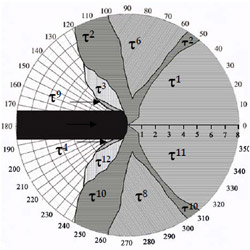
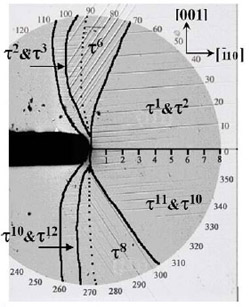
An Ultra Highspeed Spindle for Micro Milling (Grant # 0500412)
(Sponsor: National Science Foundation, CMMI-MCME, Program monitor: Dr. George A. Hazelrigg)
N. Arakere (PI), W. Lear and J. Ziegert (Originial UF PI, now at Clemson Univ)
Current technologies for micro-scale manufacturing are severely limited in their ability to create complex 3 dimensional structures and features in a wide range of high strength engineering materials. At the macro-scale, milling is one of the most widely used processes for this type of manufacturing. However, it has yet to become an economically viable technology for micro-scale manufacturing. One reason for this is the lack of suitable spindles capable of achieving rotational speeds in excess of 500,000 rpm coupled with sub-micron runout at the tool tip. The high speeds are needed to achieve the desired cutting velocities for optimal chip formation using very small diameter cutters, and to achieve economical material removal rates combined with good surface finish; while the low runout is needed to prevent premature tool breakage.
The goals of this project:
- Develop new micro-milling spindle technologies to enable milling to become a standard technique for manufacturing micro-parts and features in a wide range of materials
- Develop process monitoring technologies to enable measurement of the very high frequency, low amplitude cutting forces encountered in micro-milling
- Extend the capability to model and predict rotordynamics and bearing behavior at smaller sizes and higher speeds.


FPTPB Prototype air bearing

View of the micro-spindle with turbine drive

High frequency force dynamometer based on 2 DOF flexure

Ductile Fracture of Surface-Cracked Metallic Liners Bonded to a Structural Composite
(Sponsor: NASA Marshall Space Flight Center, Huntsville, AL)
PI: Nagaraj Arakere, PhD Student: Shawn English
This research involves a numerical and experimental investigation of ductile fracture of surface cracked metallic liners used in composite overwrap pressure vessels (COPVs) used in space vehicle applications. The characterization of tip fields and fracture prediction of metal liners with surface cracks bonded to a structural composite has not been well established. The fracture prediction of such structures is of intrinsic and practical interest with wide application in space propulsion in composite overwrapped pressure vessels (COPV). For example, NASA’s next generation Ares launch vehicles and the Orion spacecraft will have fracture critical COPVs with metal liners. COPVs consist of a thin (0.76+ mm) metallic (typically aluminum, titanium or stainless steel) inner liner wrapped with a comparatively thick composite shell, commonly made from carbon/epoxy. The shell/wrap serves as the primary structural component, with the liner supporting very little load, but acts as a barrier for leakage of propellants and other pressurants. Understanding the behavior of surface cracks in COPV liners is challenging because, (i) the liner may have experienced initial plastic deformation during manufacturing processes, (ii) liner may experience cyclic plastic strains during normal operation, and (iii) surface crack behavior may be strongly influenced by the constraint effects resulting from the bonding. From a fundamental fracture mechanics perspective, we would like to understand the constraint effects that arise from the thin liner bonded to a stiff composite and its role in characterizing crack tip fields. Currently we are investigating surface crack tip stress and deformation fields in a tensile loaded metallic liner bonded to a structural composite using a two-parameter J-T characterization and elastic-plastic modified boundary layer (MBL) finite element solutions. The Ramberg-Osgood power law hardening material model with deformation plasticity theory is implemented for the metallic liner. In addition to a composite backed surface crack liner model, elastic-plastic homogeneous surface crack models of various thicknessesare being tested. The constraint effects that arise from the bonded composite backing on the thin metallic liner and the extent to which J-T two parameter solutions characterize the crack tip fields are explored in detail. The increased elastic constraint imposed by the composite backing on the liner is seen to result in a decrease in plastic zone size and enhanced range of validity of J-T characterization. After isolating the effects of thickness, the elastic material constraint is seen to significantly enhance stress field characterization. In fact, J and T along with MBL solutions predicted stresses with remarkable accuracy for loads well beyond full yielding. Results from this study will facilitate the implementation of geometric limits in testing standards for surface cracked tension specimens bonded to a structural composite. Ductile tearing models will be investigated in the future.
English, S., Arakere, N. K., Allen, P., "J-T Characterized Stress Fields of Surface-Cracked Metallic Liners Bonded to a Structural Composite" Invited presentation at the ICACM US-France Symposium, Ft. Walton Beach, FL, April 21-24, 2009.
English, S., Arakere, N. K., Allen, P., 2010, "J-T Characterized Stress Fields of Surface-Cracked Metallic Liners Bonded to a Structural Backing - I. Uniaxial Tension," Engineering Fracture Mechanics., Vol 77, pp. 170-181. Download (PDF)
English, S., Arakere, N. K., "Comparison of J-T and J-Q Characterized Stress Fields of Surface-Cracked Metallic Liners" Invited presentation at the International Plasticity Conference, Jan 5-9, St. Kitts, 2010 and to be submitted for publication in the International Journal of Plasticity.

COPVs

Bonded FE Model

Surface crack FE mesh

MBL mesh and displacement conditions
Determination of Static and Dynamic Hardness and Fracture Toughness of Through and Case Hardened Bearing Steels
(Sponsor: The Timken Company, Canton, OH)
PI: G. Subhash, co-PI: Nagaraj Arakere, PhD Students: Mike Klecka and Nathan Branch
Ball and rolling element bearings are perhaps the most widely used precision components in industrial machinery. The durability and performance of materials used in high-performance high-precision ball and roller bearings, gears and other tribological applications are largely determined by surface engineering. It is widely recognized that current methodologies for designing materials/surfaces for such tribological applications are mostly empirical. We are developing a coordinated experimental and numerical approach utilizing macro and micro indentation and elastic-plastic Finite Element Analysis (FEA) for optimizing the rolling contact fatigue (RCF) and tribological performance of Plastically Grades Surfaces (PGSs). Our approach can be used to design/tailor PGSs such as case hardened bearing surfaces with specific monotonic and cyclic stress-strain response and optimized hardness profiles to achieve desired fatigue life and wear properties of tribological surfaces used in bearings, gears and seals. Optimizing case hardened bearings will facilitate higher temperature operation, higher power density, lower frictional losses, reduced wear, improved performance in marginal lubrication, higher resistance to debris, and improved system durability and reliability.

Elastic and Fracture Properties Of Bx-265 Foam Material
(Sponsor: NASA Marshall Space Flight Center, Huntsville, AL, SUS Florida Turbine Initiative)
Co-Investigators: Nagaraj Arakere and B. Sankar
PhD students: Erik Knudsen, P. ThyagasundaramThis research involves a numerical and experimental investigation for determining mixed-mode stress intensity factors, fracture toughness, and crack turning angle for BX-265 foam insulation material, used by NASA to insulate the external tank (ET) for the space shuttle, is presented. BX-265 foam is a type of Spray-on Foam Insulation (SOFI), similar to the material used to insulate attics in residential construction. This cellular material is a good insulator and is very lightweight. Breakup of segments of this foam insulation on the shuttle ET impacting the shuttle thermal protection tiles during liftoff is believed to have caused the space shuttle Columbia failure during re-entry. NASA engineers are interested in understanding the processes that govern the breakup/fracture of this material from the shuttle ET. The foam is anisotropic in nature and the required stress and fracture mechanics analysis must include the effects of the direction dependence on material properties. We are investigating the elastic and fracture properties of foams using both fracture mechanics and micromechanics modeling approaches. The results represent a quantitative basis for evaluating the strength and fracture properties of anisotropic foam insulation material.
Arakere, N. K, Knudsen, E., Wells, D. McGill, P., Swanson, G. R, 2008. "Determination of mixed-mode stress intensity factors, fracture toughness, and crack turning angle for anisotropic foam material," International Journal of Solids and Structures , 45, pp. 4936-4951.
Knudsen, E., and Arakere, N. K., "Numerical evaluation of Mode I stress intensity factor as a function of material orientation for BX-265 foam insulation material," GT2006-90376, Presented at the 51st ASME/IGTI Turbo Expo International Conference, May 8-11, 2006, Barcelona, Spain.
Thyagasundaram, P., Sankar, B., Arakere, N. K., 2009, "The elastic properties of foam with tetrakidekahedral cells using finite element analysis," Presented at the 50th AIAA SDM Conference, Palm Springs, CA, May 2009, and submitted for publication to the AIAA Journal.




An Experimental and Numerical Investigation of Heterogeneous Stress-Induced Phase Transformation in Niti Shape Memory Alloy
Sponsor: UF-UCF-NASA KSC-SRI collaboration, N. Arakere, B. Sankar, R. Vaidyanathan
PhD student: T. J. YuThis research involves neutron diffraction measurements from a NiTi Brazilian Disk (BD) specimen loaded laterally in compression and associated with a macroscopically heterogeneous stress state. Measurements were performed on the Spectrometer for MAterials Research at Temperature and Stress (SMARTS) at Los Alamos National Laboratory in a spatially resolved mode. Neutron spectra confirm the presence of both monoclinic and cubic phases of NiTi, with the respective volume fractions depending on the location of the measurements (and the corresponding stress state). The neutron diffraction measurements of the strain, texture and phase volume fraction offer insight in to accommodation mechanisms as the cubic and monoclinic phases co-exist in a macroscopically heterogeneous stress state. Experimentally measured uniaxial stressstrain response is used to identify constitutive properties using FEA and later extended to a biaxial mixed-mode model. The biaxial strain and phase fraction distribution computed from the FEA model in a NiTi Disk was compared to experimental results.

